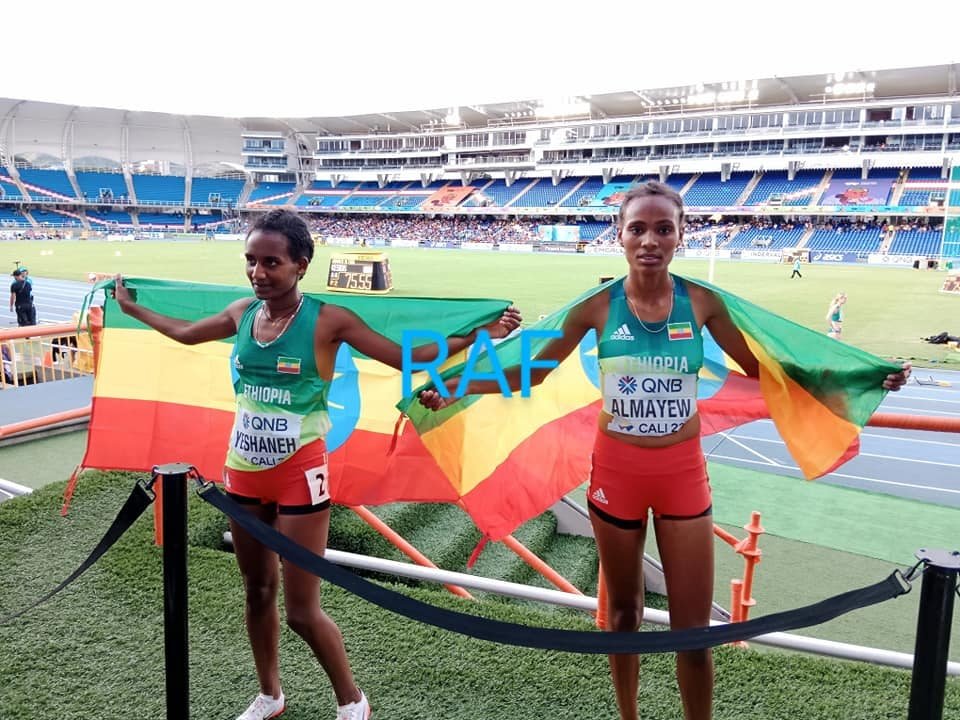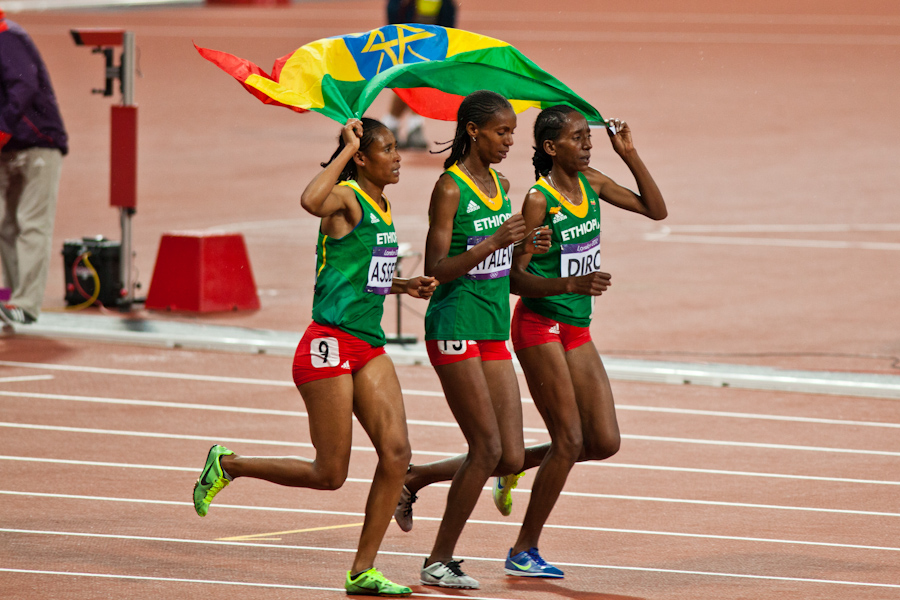Physiological and Biomechanical Advantages

Ethiopian athletes, particularly those specializing in steeplechase, exhibit a unique combination of physiological and biomechanical characteristics that contribute to their dominance in the event. These factors, coupled with their rigorous training regimes, have propelled them to the forefront of the global steeplechase scene.
Physiological Characteristics
Ethiopian steeplechase runners often possess a distinct set of physiological characteristics that are advantageous for the demanding nature of the event. These include:
- High Altitude Adaptation: Many Ethiopian athletes hail from the Ethiopian Highlands, where the altitude is significantly higher than sea level. This exposure to thin air and reduced oxygen levels leads to physiological adaptations, including increased red blood cell count, improved oxygen uptake and utilization, and enhanced cardiovascular efficiency. These adaptations allow Ethiopian runners to perform well in endurance events, including steeplechase, where oxygen consumption is crucial.
- Lean Body Mass: Ethiopian runners typically have a lean body mass, which minimizes the energy expenditure required for running. Their lean muscle mass allows for efficient energy utilization, contributing to their endurance capabilities.
- Efficient Energy Metabolism: Ethiopian athletes often exhibit efficient energy metabolism, particularly in the utilization of fat as a fuel source during prolonged exercise. This adaptation allows them to sustain their pace over long distances and maintain their energy levels throughout the race.
- Strong Aerobic Capacity: The ability to efficiently deliver oxygen to working muscles is essential for endurance performance. Ethiopian runners generally possess a strong aerobic capacity, enabling them to maintain a high level of sustained effort over extended periods.
Biomechanics of Ethiopian Steeplechase Runners
The biomechanics of Ethiopian steeplechase runners play a vital role in their success. Their running form, water jump technique, and barrier clearance techniques are highly efficient and contribute to their overall performance.
- Running Form: Ethiopian runners typically exhibit a smooth and efficient running form, characterized by a long stride length and a high cadence. This combination allows them to cover ground quickly and maintain their pace throughout the race. Their upright posture and minimal arm swing further contribute to their efficient running style.
- Water Jump Technique: The water jump is a challenging aspect of the steeplechase, and Ethiopian runners have developed a distinctive technique. They often approach the jump with a slight lean, maintaining a forward momentum while ensuring their feet land on the opposite side of the barrier. This technique allows them to clear the water obstacle efficiently and maintain their speed.
- Barrier Clearance Technique: Ethiopian steeplechase runners employ a variety of techniques for clearing the barriers. They often use a “leap-and-bound” technique, where they take a powerful leap over the barrier and land softly on the other side. This technique allows them to maintain their speed and minimize the energy expenditure required for barrier clearance. They also utilize a “one-foot” technique, where they clear the barrier with a single foot, maintaining their momentum and minimizing disruption to their stride.
Genetics and Environmental Factors
Genetics and environmental factors play a significant role in shaping the physical attributes of Ethiopian athletes.
- Genetics: Ethiopian athletes have a genetic predisposition for endurance running. This predisposition is believed to be influenced by their ancestors’ adaptations to the harsh environmental conditions of the Ethiopian Highlands. Their genes may encode for physiological characteristics, such as a higher red blood cell count, efficient energy metabolism, and lean body mass, which are advantageous for endurance performance.
- Environmental Factors: The environmental factors in Ethiopia, particularly the high altitude, contribute to the development of endurance capabilities. The thin air at high altitudes forces the body to adapt by increasing red blood cell production and improving oxygen utilization. The rugged terrain and challenging climate also contribute to the development of strength, endurance, and resilience.
Training Regimens and Strategies
Ethiopian steeplechase coaches employ rigorous training regimens and strategies that are tailored to the specific demands of the event. These include:
- High-Volume Training: Ethiopian coaches emphasize high-volume training, involving extensive running sessions at different intensities. This approach aims to build endurance, improve aerobic capacity, and enhance the athletes’ ability to handle the demands of the steeplechase.
- Interval Training: Interval training is a key component of Ethiopian steeplechase training. It involves alternating periods of high-intensity effort with periods of rest or low-intensity recovery. This method helps develop speed, anaerobic fitness, and the ability to recover quickly between demanding intervals.
- Water Jump Practice: Ethiopian coaches prioritize water jump practice, ensuring their athletes develop a smooth and efficient technique for clearing the obstacle. This involves practicing the water jump repeatedly, focusing on maintaining speed, rhythm, and landing accuracy.
- Barrier Clearance Practice: Barrier clearance is another crucial aspect of steeplechase training. Ethiopian coaches incorporate barrier clearance drills into their training sessions, helping athletes develop the technique and strength required to clear the obstacles efficiently.
Cultural and Social Influences: Ethiopian Steeplechase

The dominance of Ethiopian athletes in the steeplechase is not solely attributed to physiological and biomechanical advantages. Cultural and social factors play a significant role in shaping this sporting tradition. The Ethiopian culture fosters an environment where running is deeply ingrained, and social support systems contribute to the development of world-class steeplechasers.
Community Support and National Pride, Ethiopian steeplechase
The strong sense of community in Ethiopia is a driving force behind the nation’s athletic success. Running is often seen as a way to represent one’s village or region, fostering a sense of pride and unity. This collective spirit motivates athletes to train hard and achieve excellence, knowing that their success brings honor to their community.
- Families and friends provide unwavering support, often sacrificing their own needs to help athletes reach their full potential.
- Community gatherings and celebrations often revolve around athletic achievements, reinforcing the importance of sport in Ethiopian society.
Impact of Ethiopian Steeplechase Success
The success of Ethiopian steeplechasers has had a profound impact on the nation’s sporting culture and identity. It has inspired a new generation of athletes, creating a ripple effect that extends beyond the steeplechase.
- Ethiopian athletes have become global icons, raising the country’s profile on the world stage.
- The success in the steeplechase has sparked interest in other sports, leading to a broader development of athletic talent in Ethiopia.
Comparison of Social and Cultural Contexts
| Factor | Ethiopia | Other Countries |
|---|---|---|
| Community Support | Strong sense of community, with families and villages rallying behind athletes. | May vary depending on the country, with some having stronger community support than others. |
| National Pride | Athletes are seen as national heroes, representing the country’s pride and resilience. | National pride is a motivating factor in many countries, but the extent to which it drives athletic success can vary. |
| Sporting Culture | Running is deeply ingrained in Ethiopian culture, with a strong tradition of long-distance running. | Sporting cultures vary widely, with some countries emphasizing team sports while others prioritize individual athletic pursuits. |
The Ethiopian steeplechase is a testament to the country’s athletic prowess, with its runners known for their grit and endurance. This spirit of resilience is embodied in figures like Ethiopia’s Girma, a leader whose legacy inspires generations, ethiopia girma.
Just as Girma’s unwavering commitment shaped his path, so too does the determination of Ethiopian steeplechasers propel them towards victory, their footsteps echoing the echoes of a nation’s legacy.
The Ethiopian steeplechase is a testament to resilience, just like the pursuit of a comfortable and stylish workspace. A well-chosen leather office chair, like those available at leather office chair argos , can be your personal sanctuary, offering support and inspiration as you navigate the challenges of the day.
The Ethiopian steeplechasers, with their unwavering determination, remind us that even amidst obstacles, we can find strength and grace, just as a well-crafted chair can provide a foundation for our work and our dreams.